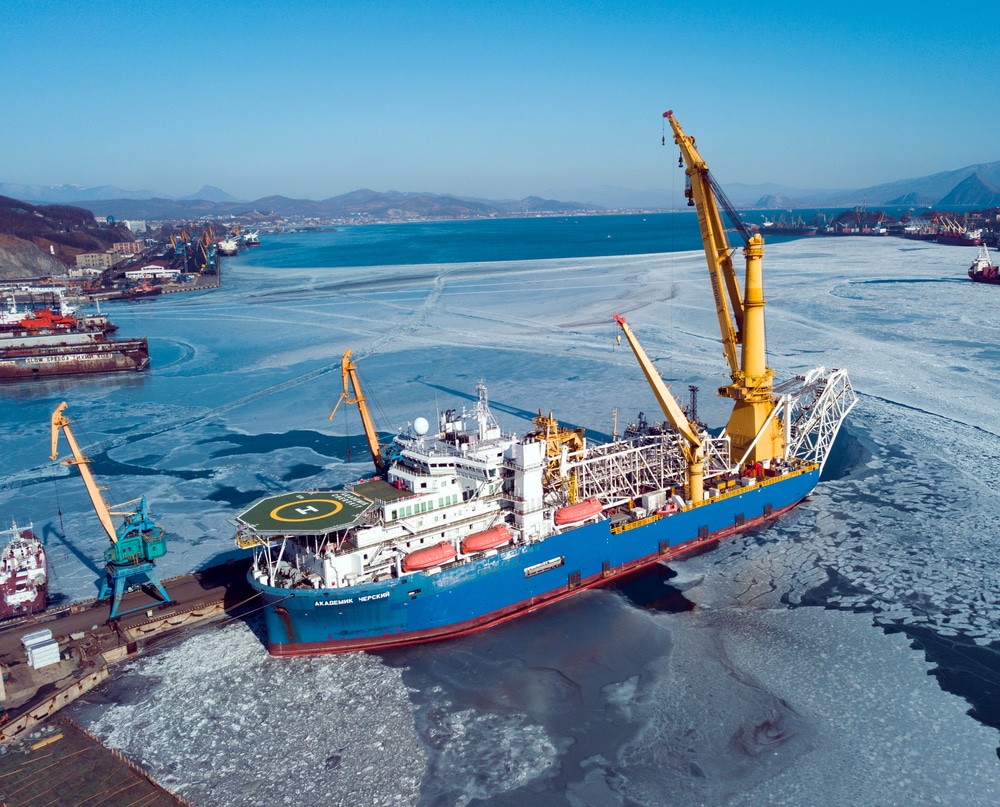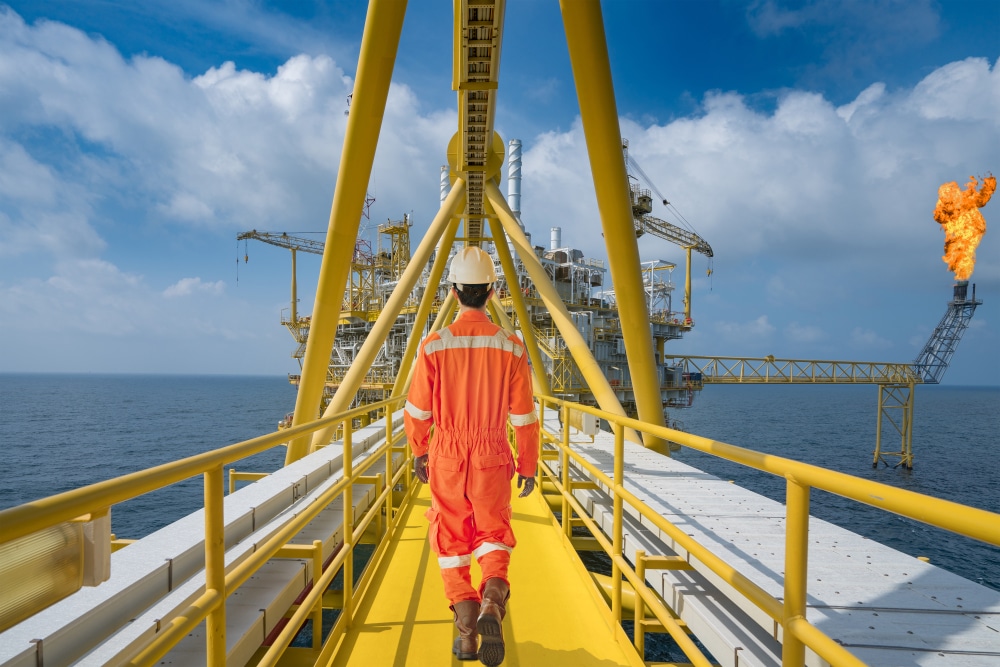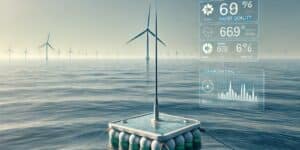Marine contractors play a vital role in the maritime industry. By providing innovative, cost-effective, and sustainable services/solutions, they contribute to the overall efficiency and smoothness of the whole maritime industry. To do so, they themselves need to rely on new technologies. Sinay provides them with high-quality metocean data and state-of-the-art tools that help them tackle the main challenges faced in their day-to-day business in order to work smarter and become more sustainable.
What are the main challenges faced by marine contractors?

Marine contractors provide steady support in various ways to port authorities and operators, sea shipping lines, the oil and gas industry, the renewable energy industry, civil engineering companies, local communities, state federal, and real estate developers, among others. They have a proven experience in a variety of areas from land to sea:
- drilling/extraction and related repairs
- transporting, installing, and removing offshore structures (wind farms, solar plants, bridges, offshore equipment, floating platforms…);
- designing and building piers, docks, wharves, rip raps, bulkheads, boat ramps, boathouses, harbors, marinas or break-waters/wave attenuators/seawalls;
- installation/repair and restoration of turnkey marine structures on the waterfront;
- underwater construction, repair, and inspection;
- pipe or cable installation;
- loading for barge transportation;
- dredging;
- rig moving;
- pile driving; framing,
- mooring devices, mooring fields;
- wood shingles, wood shakes, or asphalt;
- ships maneuvers;
- boat lifting;
- heavy equipment transportation on water;
- commercial diving;
And just like all stakeholders in the maritime industry as a whole, marine contractors face a number of challenges:
- increase efficiency in a highly competitive market;
- remain profitable in a contest of cost raising and accelerated digital transformation;
- operate in risky work conditions/environment: large-scale climate events, rough seas, stormy areas, etc.;
- adapt to quickly evolving regulation at all levels (state federal, national and international), either general or specifically linked to maritime activities, particularly those pertaining to the environmental aspects.
What is the added value of metocean analytics for marine contractors?
Yet, in-depth knowledge of the environment, weather, and ocean conditions are mandatory to carry out all these activities in the harshest environments. As a matter of fact, numerous outside factors have to be taken into consideration in the transport business but oceanography and weather conditions are some of the critical points. Cargo transportation especially is the most vulnerable to any mood change from the climate. From inland to sea transportation, there might be interruptions due to weather conditions. With a worst-case scenario, routes would be changed in order to meet the arrival place and avoid any disaster caused by the weather.
Make more relevant choices based on historical and real-time data
How can Sinay’s metocean analytics help? Historical and real-time data gathered from vessels AIS equipment and satellite observations are most useful to assess a project’s feasibility, select the most appropriate site, determine the most suitable weather windows or time of the year to conduct a coastal or offshore development, etc.
Metocean data are of very different types:
- local or regional climatology (barometric pressure, wind, air temperature, rain, humidity, solar radiation, storm surges…);
- physical oceanography (seabed state, sea water levels, salinity, waves height and direction, current velocity, streams, tides…)
- extreme events (droughts, storms, tsunamis…)
- erosion control and sediment transport,
- coastline or offshore hazards.
This information helps the marine construction industry actors to:
- minimize risk for people and equipment;
- better allocate human and material resources;
- ensure effective planning and smooth management of operations;
- avoid or limit interruptions due to weather conditions by choosing the right time/period for operations;
- predict complications, using predictive forecast analytics and the business-as-usual know-how;
- define remediation solutions to recurrent issues so as to eliminate the root cause.
Protect marine ecosystem, thanks to sustainable operations
It is already a well-known fact that marine construction companies have to make a huge effort regarding air and water pollution in order to protect the extremely sensitive marine ecosystem. Sinay’s metocean analytics and advanced environmental modules are very useful to reduce the negative effects of their activities and lower their carbon footprint. Powerful IA-based software provides valuable indicators that allow fast decision-making, for project development, regulatory compliance, or any other issue linked to marine pollution on any site (ports and surroundings, offshore oceans…).
Based on the outcome of air quality, water quality, and underwater noise monitoring, marine contractors are able to select the most appropriate solutions and techniques. The aim is to avoid the destruction of plants and coral environments, as well as the disturbance, injury, or death of marine animals. As a matter of fact, noise, light disturbance, vibration, and harmful substances caused by the marine construction industry might alter these animals’ habitats and behavior (feeding, hunting, communication, reproduction, migration…), whether they live undersea or in coastal zones.
On top of driving sustainable services, marine contractors can assist scientific research in order to improve the understanding of ecology. This shall lead to better interactions between the marine industry in the broad sense and the environment where it evolves.

How can logistics modules help to better plan and manage operations?
Juggling between efficiency and profitability is a perilous exercise for all sectors. For marine contractors, operation planning and management usually occupy a separate department. It is enough proof to say that these topics are sensitive ones both. The use of high-end technologies that fit the marine construction business allows improvement in terms of productivity, level of service offered to customers, and long-term profitability. Here are some examples:
- Follow-up commercial vessel voyages, and based on their respective ETA prediction provided by tools such as Sinay’s ETA calculator, get ready for lifting, towing, maneuvering…
- Ensure continuous and streamlined communication with the industry’s stakeholders.
- Predict and prevent accidents, using sensors and Artificial Intelligence.
Automate maintenance in order to lower the risk of breakdown, which might mean equipment unavailability, slowing down, or stopping the activity.
In order to ease the exploitation of Sinay’s data, reports, and software, marine contractors may access them on their own information system thanks to a dedicated API. Having these inputs in a single digital place allows swift, relevant, and cost-effective decisions that contribute to increased efficiency, sustainability, risk mitigation, and compliance with the regulation.
And if ever the existing data related to a specific location are not available or are insufficient for accurate analysis, a tailored field measurement campaign may be undertaken. A team of experts also provides personalized advice to help marine contractors to choose the most appropriate module and make the best use of metocean analytics, based on their needs and strategy
How to become a marine contractor?
Considering the increasing demand for sea transportation services, if only to mention this sector, marine contractors are greatly sought after in many regions over the world: Europe (The Netherlands, United Kingdom, Norway…), the United States (Florida, California, New York, New Jersey, Massachusetts, Georgia, North Carolina, Texas…), Canada, Australia, Africa, Middle East (Saudi Arabia, United Arab Emirates…), Asia (Malaysia, China…), etc.
There are multiple opportunities for companies that show proven capabilities and experience in providing marine conducting engineering services, heavy civil marine construction, and other shoreline projects. To enter the field, all administrative formalities must be completed first: create a legal entity, registered with relevant state authorities, open a bank account, then get a marine contractor’s license and permits in its area of expertise (business LLC and contractor licensing, heavy machinery operation certification…). Hiring skilled people (technicians, engineers, project managers, etc.) having appropriate degrees might also be necessary to complete the team.
Last but not least, subscribing to dedicated insurance is mandatory. Indeed, on top of all other challenges, being compliant with new regulations, such as building codes and other rules set by the Occupational Safety and Health Administration (Osha), is a must. Marine actors are facing several regulations from several countries due to the nature of the business. What is approved in one country might not be approved in another one? Furthermore, marine contractors are exposed to major perils when engaging in marine construction projects, halting business and sinking profits. Tailored insurance protects the company from such disasters that may lead to its failure.
A broad portfolio of specific coverage exists to protect all companies engaged in marine construction businesses and other types of services, so as to meet their activities’ requirements.
- Marine general liability covers products and operations liability for any work performed by watercraft.
- Marine contractor’s liability protects property damage to marine structures.
- Commercial hull and protection and indemnity (P&I) provides coverage to shipowners against physical damage to the vessel (watercraft and hull) in case of an accident or a collision;
- Bumbershoot consists of liability protection over both marine and non-marine exposures; including auto liability, general liability, and employers’ liability.
- Coverage for contractors’ equipment (loss, theft, damage)
- Compensation for workers in case of work-related disease or accident that lead to injury or death.
For client companies, on top of a contractor’s license, having insurance for general liability or for a specific business aspect is a key factor to choose the best partner for marine services.
Conclusion
Marine contractors have a great role to play in helping the maritime industry tackle the challenges generated by global trade growth and successfully take the long and challenging road to decarbonisation.
Frequently Asked Questions About Marine Contractors
A marine contractor is a professional who specializes in the construction, repair, and maintenance of marine structures and vessels, including docks, piers, bridges, boats, and ships. They may also be involved in the installation and maintenance of marine equipment.
Marine contractors are working with or for port authorities and operators, sea shipping lines, the oil and gas industry, the renewable energy industry, civil engineering companies, local communities, state federal, and real estate developers
To become a marine contractor, you will typically need to gain relevant education and experience in the field, obtain necessary licenses and certifications, and build a professional network and reputation in the industry!
Technology is important in the maritime industry because it helps to improve efficiency, safety, and environmental performance. For example, advances in navigation and communication systems can help ships to avoid collisions and other accidents. In addition, technology can be used to monitor and reduce the environmental impact of shipping. Overall, the adoption of new technologies in the maritime industry can help to make shipping more sustainable and cost-effective.
Focus on data to make effective decisions
Discover our modules
Environmental Monitoring
Monitor air quality in real-time, be alerted when a threshold is reached & easily comply with regulation thanks to the automated reports.
Monitor water quality in real-time, predict and avoid water pollution & comply with regulations thanks to the automated reports.
Deliver a preliminary metocean analysis and the associated report in jut a few minutes.
You may also be interested by those others environment application :


